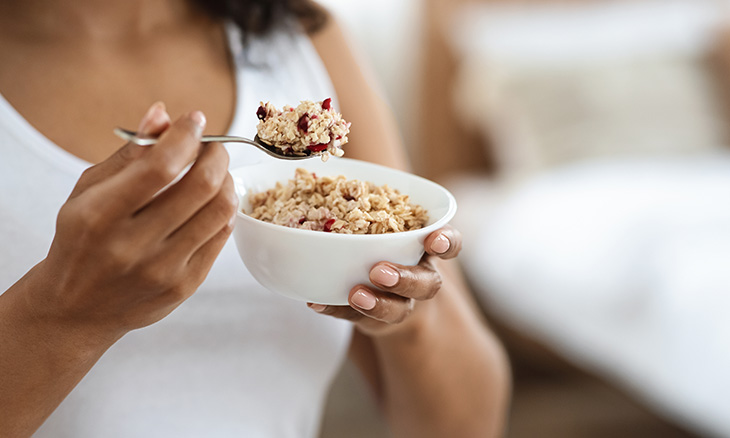
Nutrition
Tips to Take Control of Your Diet
Incorporating healthy eating into your daily life is important, but it isn’t always easy. In recognition of National Nutrition Month, here are some tips for healthy eating from Bayhealth’s Nutritional Services team to help get you started or back on track.
- Replace refined grains with whole grains. This is one of the easiest changes you can make and, therefore, is a great place to start. For example, instead of choosing refined grains opt for whole grains when choosing breads, tortillas, buns, crackers, bagels, and pastas. The benefit of this tip for healthy eating is an increase in the amount of fiber you consume, which helps with weight management, satiety, gut health, and lowering cholesterol. In addition to whole wheat, experiment with other whole grains such as barley, buckwheat, quinoa, or oatmeal. Women should aim for 25 grams of fiber per day, while men should aim for 38 grams.
- Increase your intake of fruits and vegetables. Strive for five or more servings a day. Fresh, canned or frozen count as long as they don’t have added sodium, sugar or fat. Also, try different cooking methods. If you’re getting tired of steamed vegetables, for example, try roasting them with some olive oil and cracked black pepper instead, and make them the star of your meal.
- Eat a variety of colors and types of fruits and vegetables. To ensure you are getting a wide variety of nutrients, you should eat fruits and vegetables from all of the different color groups such as dark leafy greens like spinach, and orange veggies and fruits like bell peppers or oranges.
- Plan for meals and snacks, and complete all of the prep work for the week on your day off. This will also help you get three or more food groups into each meal, which is another tip for healthy eating. For example, make an effort to include a veggie, lean protein source and complex carbohydrate at each meal. Try using non-animal sources of protein such as nuts, seeds, beans, and soy. Also consider getting the whole family involved in meal planning so everyone is on board and more likely to stick with healthy eating.
Building upon these tips for healthy eating, here are some final pieces of advice.
- Plan your snacks. This will help you fill in food groups you’re missing. For example, a lot of people don’t eat fruit with their meals. So a great snack would be apple slices with a tablespoon of peanut butter. Pairing a little bit of protein with other foods can also help tide you over until the next meal.
- Make a list before you go grocery shopping. Take an inventory of the food items in your cabinets to avoid buying items you already have on hand. This also can be a good starting point to planning your meals for the week.
- Shop for food that’s in season. This will save you money, and foods in season taste better.
Bayhealth has both inpatient and outpatient dietitians. If you’re interested in talking with an outpatient dietitian, consult your primary care physician and ask them to send a referral for you. Visit Bayhealth.org/Nutrition-Services for more information about our Nutritional Services or call 302-744-6828.
